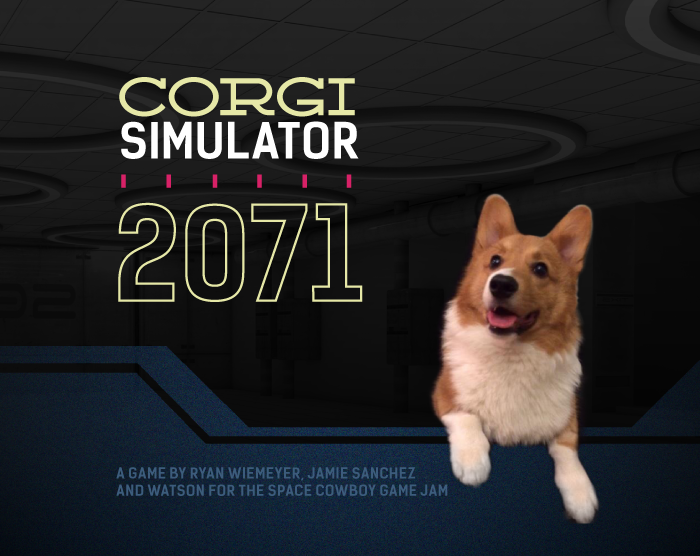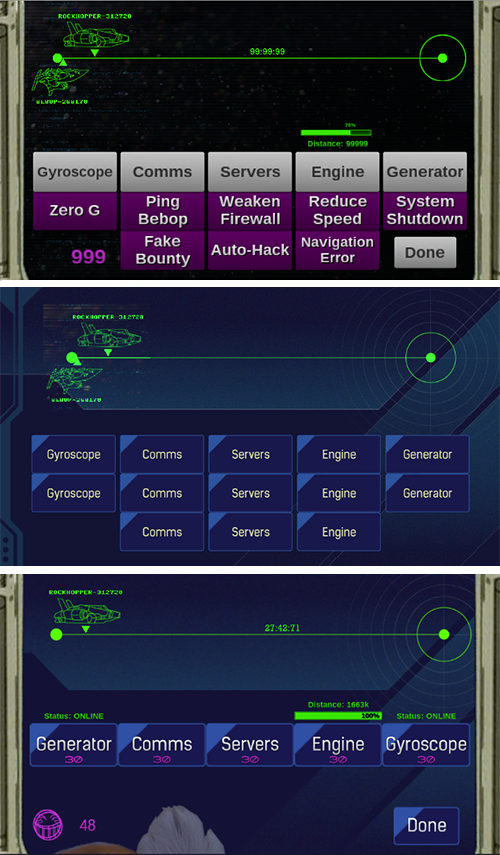
This is a full motion video game created for the Space Cowboy Game Jam. You play as Ein, a data dog who’s been kidnapped by two smugglers. Your goal is to manipulate these humans into leaving their computers unattended so you can hack your way back to the Bebop.
It started when Brandon Boyer announced the creation of the Space Cowboy Game Jam, a two-week jam inspired by Cowboy Bebop. Of all things. I’ve loved this series for 12 years. How could I say no to Cowboy Bebop?
Well, Ryan could. He’s supposed to be releasing two other games, but he’s gotta have time for this thing I want to do, right? Ryan and I agreed this was a good opportunity to work together (I tricked him), so we spent an entire evening drafting eight concepts. We scrapped all of them knowing Corgi Simulator 2071 was the kind of silly game that could be made in two weeks. The idea formed from the title a jQuery game I was making that just wasn’t going anywhere. We thought, hey, tamagatchi (tamagatchis?) are kinda cool. It evolved into a hacking game when we realized tamagatchi are more toy, less game.
Writing isn’t either of our strengths but it really didn’t matter. This project was a testament to the eight months of training and love we’ve poured over our dog, Watson. He knows over twenty tricks and he’s only 10 months old.
There are several reasons for the FMV approach: my animation skills are limited, two weeks isn’t a lot of time to learn animation, we didn’t want to ignore our corgi during the development of our corgi-based game, and we have easy access to a green screen. We used the Indie City Co-op webcast room to capture video and drop out the background, chroma keying twice due to software limitations and dropping out most of the audio because verbal commands every five seconds are fairly distracting. Fortunately, Adobe Premier was easy to learn. We ended up with 50 usable video clips that corresponded to each of the actions in our script and design. Filming and editing took roughly 20 hours.

Ryan cranked out the hacking game first, the virtual pet screen next, and married the two with a strategy-based store in about 40 hours. Some of that time was lost to crashes, bugs, and getting Unity and video clips to play nicely. I learned Subversion and the basics of Unity to assist with the art pipeline. Visual design and UI took about 30 hours in Illustrator which includes concepting, typography exploration, and exporting assets. Somehow we managed to hook up all of the assets and upload the game right before the deadline. Ryan spent another few hours to fix some game-breaking bugs post-release.
I hope to improve Corgi Simulator 2071 to learn more about Unity, programming, and game development. My friends develop games for a living and with every jam, I gain more respect for their craft even if it’s just a hobby of mine. With all of the complexity and interaction, jams also make me a stronger UI designer and UX developer. This is my second game jam game and though it’s not quite a polished game, over 15,000 people have played it, PCGamer and IndieGames posted reviews, there’s a Let’s Play, and some awesome tweets and shot-outs! We placed #14 overall rated by our peers. The Space Cowboy Game Jam was a ton of fun and I got to spend time with Ryan and Watson. Thanks, Brandon!
